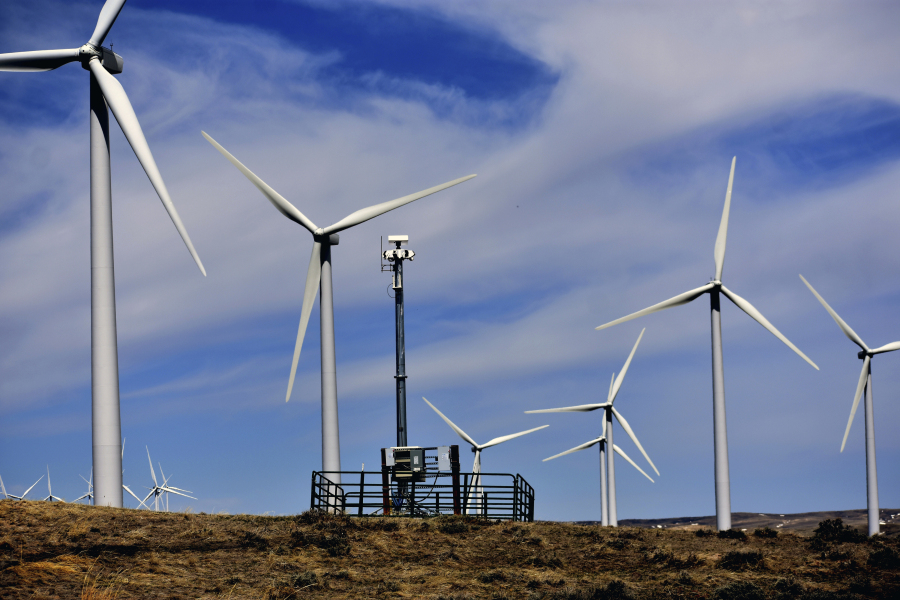ROLLING HILLS, Wyo. — Criminal cases brought by U.S. wildlife officials for killing or injuring protected eagles have dropped sharply in recent years, even as officials ramped up issuing permits that will allow wind energy companies to kill thousands of eagles without legal consequence.
The falloff in enforcement of eagle-protection laws accelerated in the Trump administration and has continued under President Joe Biden, according to U.S. Fish and Wildlife Service data obtained by The Associated Press.
It comes amid growing concern that a proliferation of wind turbines to feed the demand for renewable energy is jeopardizing golden eagle populations.
Dozens of permits approved or pending would allow roughly 6,000 eagles to be killed over several decades, government documents show. More than half of the killed birds would be golden eagles, which prefer the same open landscapes as wind developers.
The findings underscore a Biden administration dilemma: Confronting climate change through clean power development requires tradeoffs such as more dead birds from collisions with wind turbines.
“They are rolling over backwards for wind companies,” said Mike Lockhart, a former U.S. Fish and Wildlife Service biologist who researches eagles in Wyoming. “I think they are killing a hell of a lot more eagles than they ever anticipated.”
Turbines can tower 260 feet, with blade tips spinning in excess of 150 mph.
Companies often pledge to perform conservation work to offset eagle deaths. Some permits include direct payments for dead eagles — about $30,000 per bird. Numerous permits allow the killing of bald eagles without payment.
The Biden administration has proposed streamlining the process, making permits automatic in some cases, as they allow wind energy projects and power line networks to harm eagles and disturb nests.
Some wind farms have relocated turbines or reduced their numbers to minimize deaths. But turbines continue to go up in areas frequented by eagles, and Lockhart said the cumulative impacts could be disastrous.
Turbines have killed at least six golden eagles Lockhart had previously trapped and tagged for research. One was killed about two months after a wind farm started operating near its nest in 2021, he said.
“They’re going to more than double the (wind) capacity, and in doing that, the impacts on wildlife, particularly golden eagles, are going to be exponentially going up,” Lockhart said.
Fish and Wildlife Service officials said they are working to avoid such a scenario by working with companies to reduce bird deaths. “We expect the final number to be much smaller,” spokesperson Vanessa Kauffman said.
There have been a small number of high-profile prosecutions of wind companies that continued killing eagles despite prior warnings from wildlife officials — including major utilities Duke Energy, PacifiCorp and NextEra Energy. Each company agreed to take steps to limit eagle deaths.
Yet at Duke Energy’s wind farms in Wyoming, eagle deaths became more frequent after the company reached a 2013 deal that included a $1 million fine and shielded it from prosecution for 10 years, according to government and court records. The company had to pay $29,623 for each subsequent eagle death. It says the collision rate has fallen since the installation of a camera system that spots eagles and triggers shutdown of nearby turbines.



